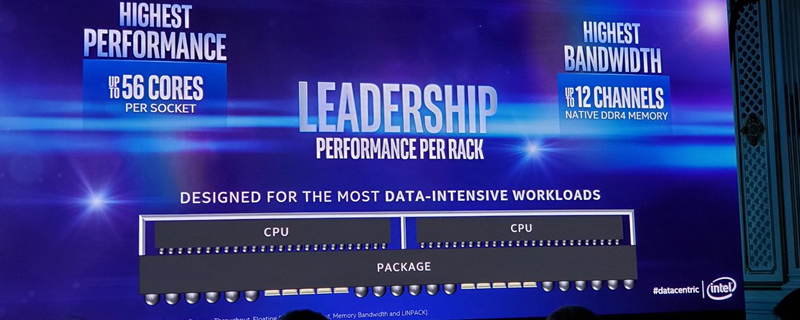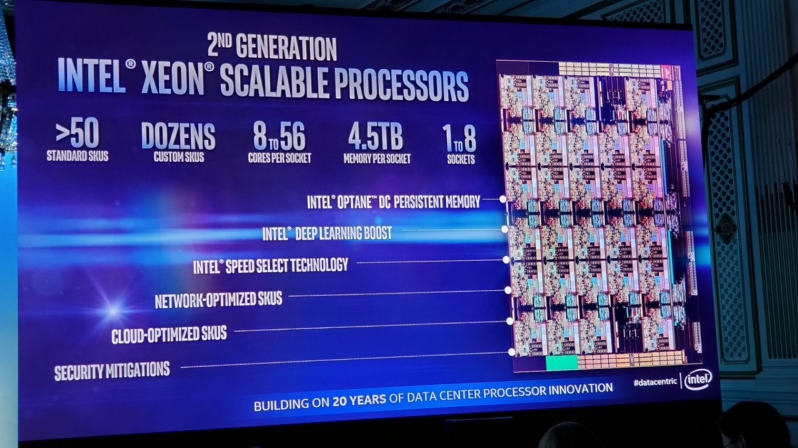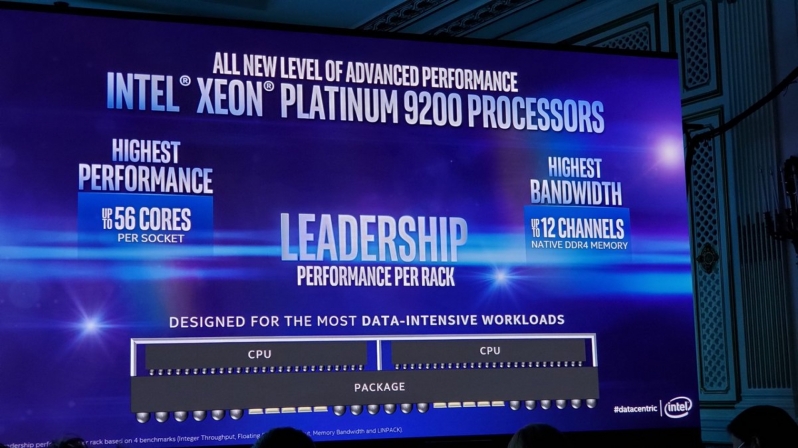Intel Launches their 2nd Generation Xeon Scalable Lineup – Promises Up to 56 cores
Intel Launches their 2nd Generation Xeon Scalable Lineup – Promises Up to 56 cores
With this launch, we will see Intel release Cascade Lake-AP (Advanced Performance), which brings together two Cascade Lake processors to deliver up to 56 cores on a single socket over two CPU dies. Since the initial reveal of Cascade Lake-AP, Intel has upgraded the processor from offer 48 cores to offer the full 56 cores that are possible within this setup, with each socket boasting support for 12-channel DDR4 memory and an insane socket size.Â
While this design is groundbreaking for the Intel, it would be remiss of us to not remind you first of Intel’s Skylake-SP marketing materials, which called AMD’s EPYC series processors “Glued-together” to drive customers away from AMD’s low-cost server platform. Now it looks like Intel has discovered the benefits of “glue” within their 2nd Generation Xeon Scalable series of processors. Â
 Â
While the benefits of Intel’s Cascade Lake architecture are numerous, the main changes to Intel’s product stack are Intel’s support for Optane DC memory DIMMs and support for new AI acceleration technologies. At its core lies the same core architecture as Skylake-based Scalable processors, though the extra Deep Learning features and Optane DC support will enable a large number of users to dramatically accelerate their workloads.Â
Thanks to their new Cascade Lake-AP platform, Intel now deliver “leadership performance per rack” by offering an insane number of CPU cores within a single socket. Strangely, Intel has not mentioned the thread count of their 56-core processor. In a dual-socket setup, Intel can now offer systems with up to 112 CPU cores and DDR4 memory over 24 DIMM slots.Â
Intel is hoping to compete with AMD’s 7nm EPYC series processors ahead of their release in mid-2019, but only time will tell how well Cascade Lake will compete in a marketplace where only AMD utilises leading-edge lithography. Yes, 56 cores sounds impressive, but how much power will that kind of system consume when compared to a 64-core 7nm EPYC series processor? More importantly, how much performance per watt would these kinds of systems offer when compared to AMD’s upcoming 7nm EPYC SKUs?
While Intel has made some significant leaps with Cascade Lake, especially within the world of Deep Learning performance, but will this be enough to defend themselves from AMD’s 2nd Generation Zen architecture as well as TSMC’s ultra-efficient 7nm process node?
You can join the discussion on Intel’s 2nd Generation Xeon Scalable lineup on the OC3D Forums.Â





